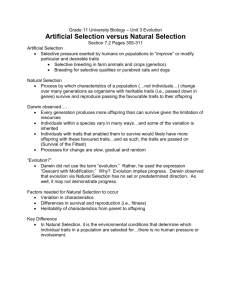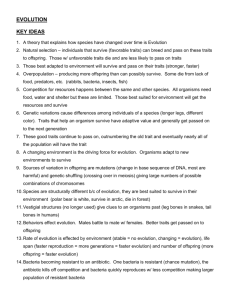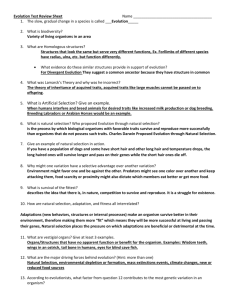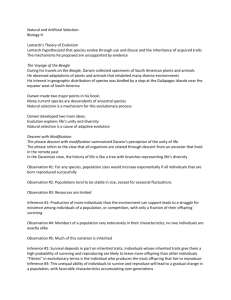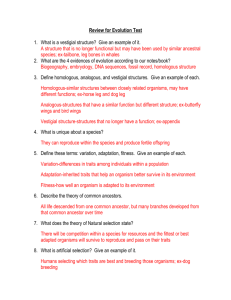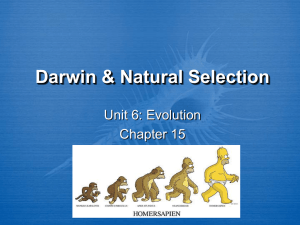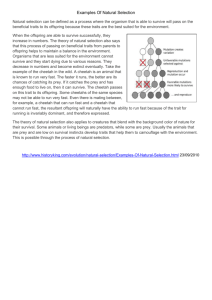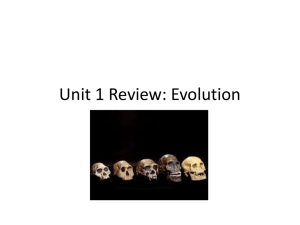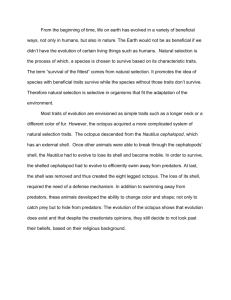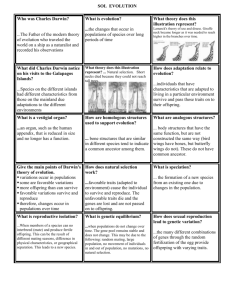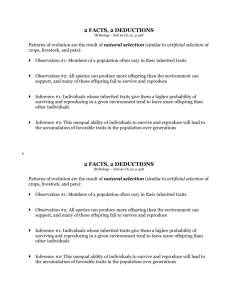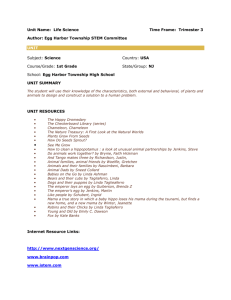Darwinian Evolution Note Sheet
advertisement
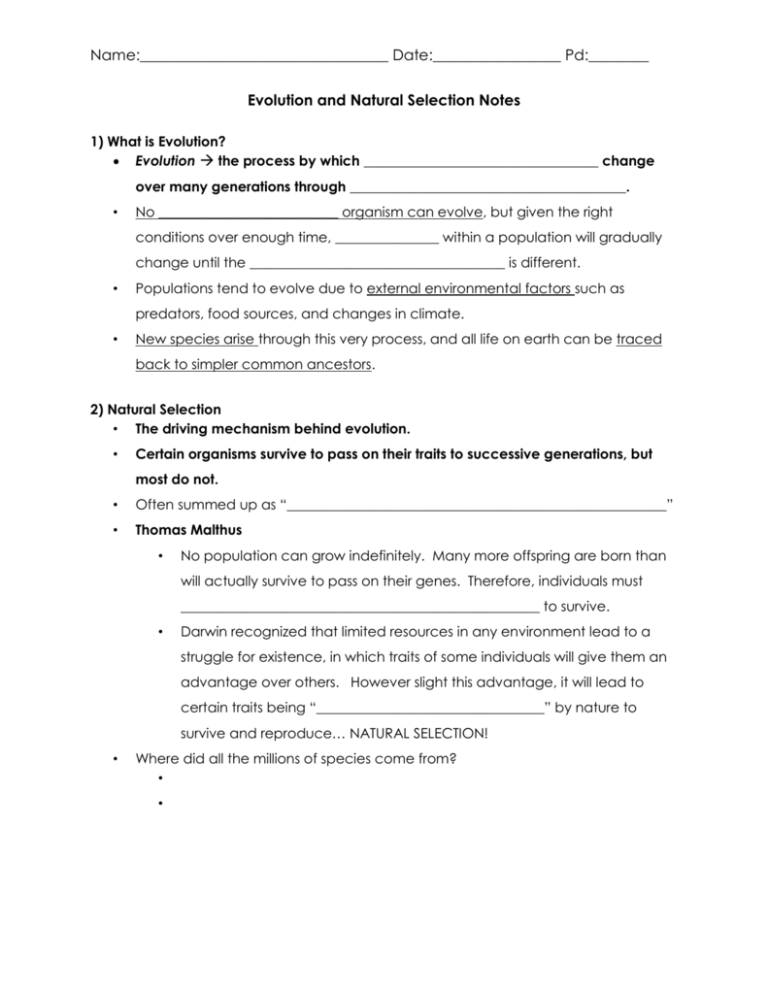
Name:_________________________________ Date:_________________ Pd:________ Evolution and Natural Selection Notes 1) What is Evolution? Evolution the process by which __________________________________ change over many generations through ________________________________________. • No __________________________ organism can evolve, but given the right conditions over enough time, _______________ within a population will gradually change until the _____________________________________ is different. • Populations tend to evolve due to external environmental factors such as predators, food sources, and changes in climate. • New species arise through this very process, and all life on earth can be traced back to simpler common ancestors. 2) Natural Selection • The driving mechanism behind evolution. • Certain organisms survive to pass on their traits to successive generations, but most do not. • Often summed up as “_______________________________________________________” • Thomas Malthus • No population can grow indefinitely. Many more offspring are born than will actually survive to pass on their genes. Therefore, individuals must ____________________________________________________ to survive. • Darwin recognized that limited resources in any environment lead to a struggle for existence, in which traits of some individuals will give them an advantage over others. However slight this advantage, it will lead to certain traits being “_________________________________” by nature to survive and reproduce… NATURAL SELECTION! • Where did all the millions of species come from? • • Name:_________________________________ Date:_________________ Pd:________ • The Principles of Natural Selection • ________________________________ • Parents produce _____________ offspring than will survive. Similarly, plants produce thousands of seeds even though only a few may germinate. • _____________________________________________ • There are genetic differences in any population which result in many combinations of different traits among offspring. These traits are __________________________________________ from parents to offspring. • _________________________________ • In any population, organisms must compete for resources to survive. Some individuals have _________________ which allow them to survive better than others; often referred to as “survival of the fittest”. • ___________________________________ • Those who have a survival advantage are more likely to __________________________ and pass on their favorable genes and traits to successive generations, resulting in new ________________________ and eventually new ___________________. • Explain the Peppered Moth Study and why there were periods of light colored moths, and periods of dark colored moths. How do the 4 principles of natural selection apply to this example? 3) Evidence for Evolution • Geographic Distribution Related native species are found only where they could have migrated on their own. • The Wallace Line • Even though the climates were almost identical, the flora and fauna were drastically different on either side of the line because _________________________________________________________________ _____________________________, just as the species on Madagascar Name:_________________________________ Date:_________________ Pd:________ had been isolated from the mainland of Africa. • Homologous Anatomy Traits that are _____________________ between species because they originate with a __________________________________________ who had the same trait. • The example to the right compares the internal structure of a human arm with the forelimb of a whale. • Although the shape of each bone is different, each bone in the human arm has a corresponding match in the whale. • Analogous Structures lead to convergent evolution. • When two species evolve a similar adaptation not because of common ancestry but because they have become adapted to a _____________________________________, or use the trait for a similar __________________________. • Birds and bats have both evolved wings because they both use them to fly. Rather than “homology”, this is called an “analogous trait” or simply, an analogy. • Both homologous and analogous traits are excellent evidence for evolution, because they show how ___________________________________ are related and how they evolved their adaptations for survival. • Vestigial Structures Physical remnants of organs that once helped a species’ ancestors survive, but are no longer useful. • Vestigial structures tend to be very ______________, because they are not needed for ______________________. Hence, they are only “vestiges” of what they once were. • If a species has an anatomical structure that appears to be out of place, many times it is vestigial. Name:_________________________________ Date:_________________ Pd:________ • Example: The human appendix is a good example of a “vestige” of an earlier digestive organ that helped our ancestors process plant material • The Fossil Record A physical history of the life on Earth in the form of fossils buried within chronologically oriented layers of sedimentary rock. • Shows ______________________________________, including transitional species • Embryology Very close similarities in early developmental stages of related species • All vertebrates start out almost the same because they all share a _____________________________________________________ which was much more primitive. • All vertebrates embryos start out with a tail and tiny neck slits resembling gills. This includes humans! • In land-dwelling groups such as mammals and reptiles, these slits disappear as the embryo develops, eventually becoming parts of the throat and mouth. • In humans, the tail is absorbed into the growing body and remains as the tailbone. • DNA and Genetics Genetic code shared by all living things on Earth • Allows us to look at different species at the ____________________________ level and compare their genes and chromosomes.

